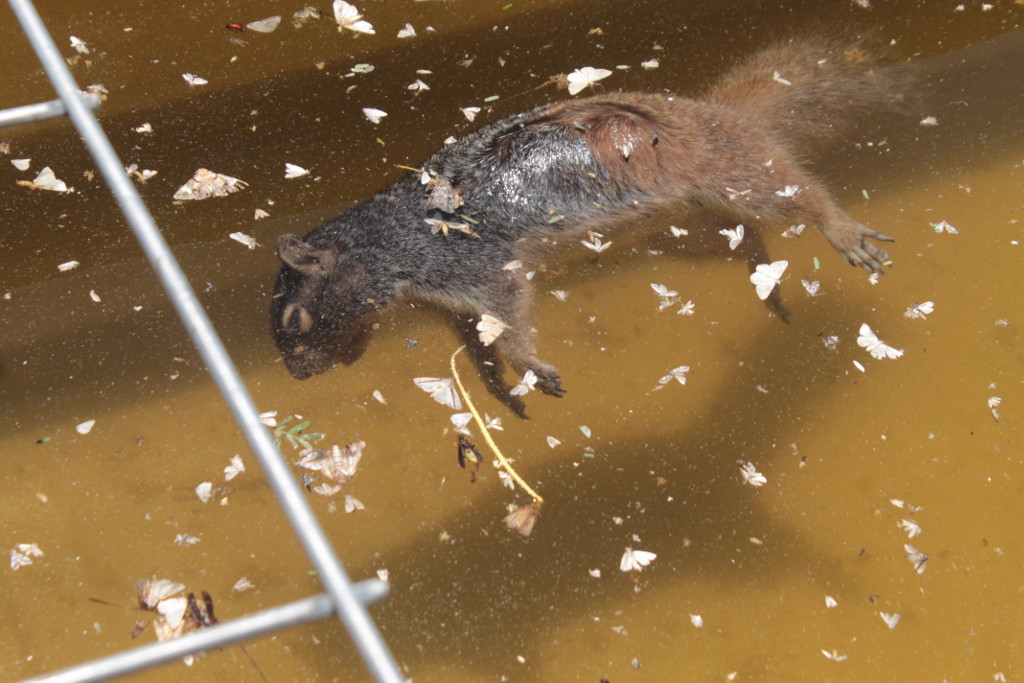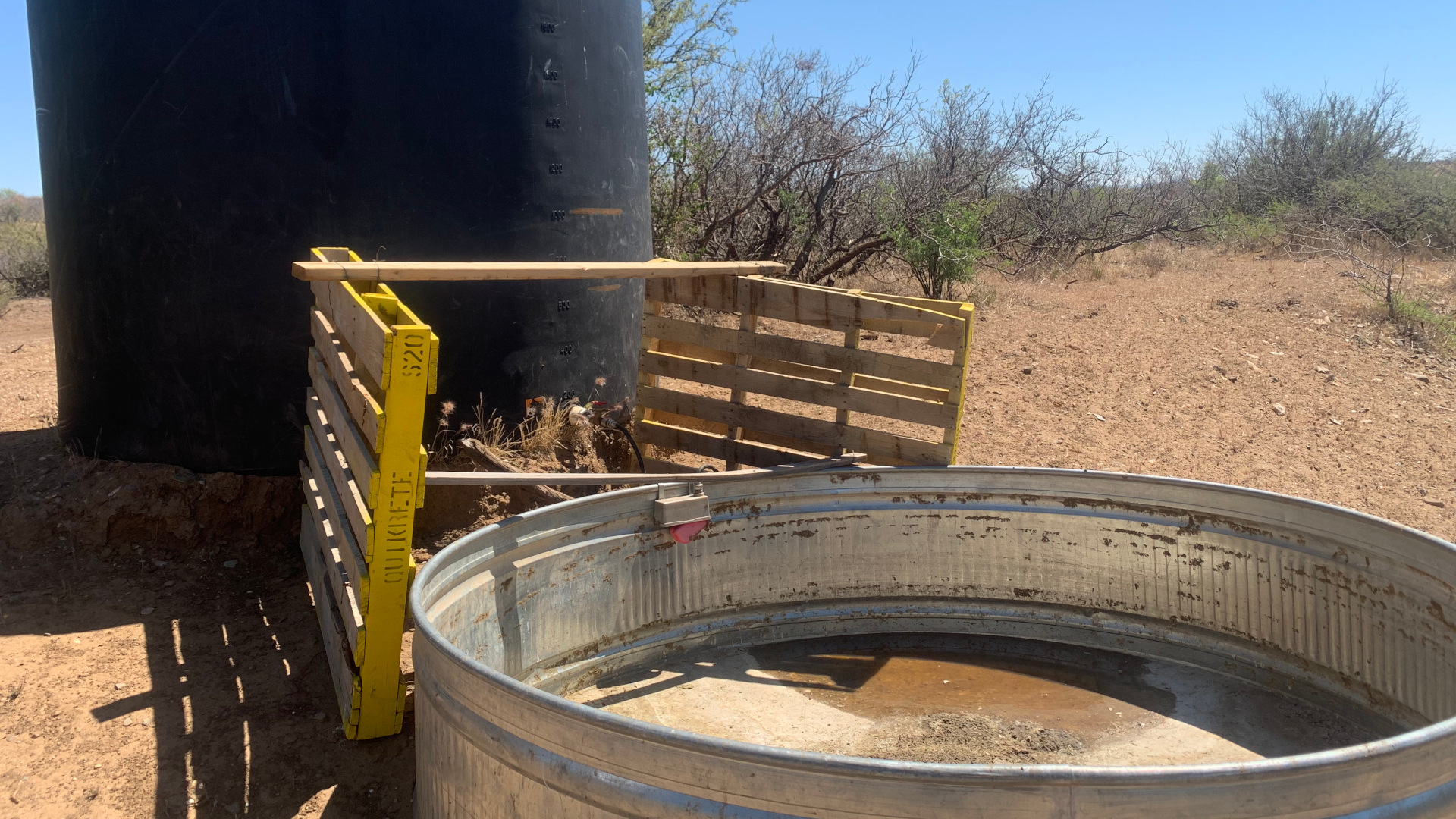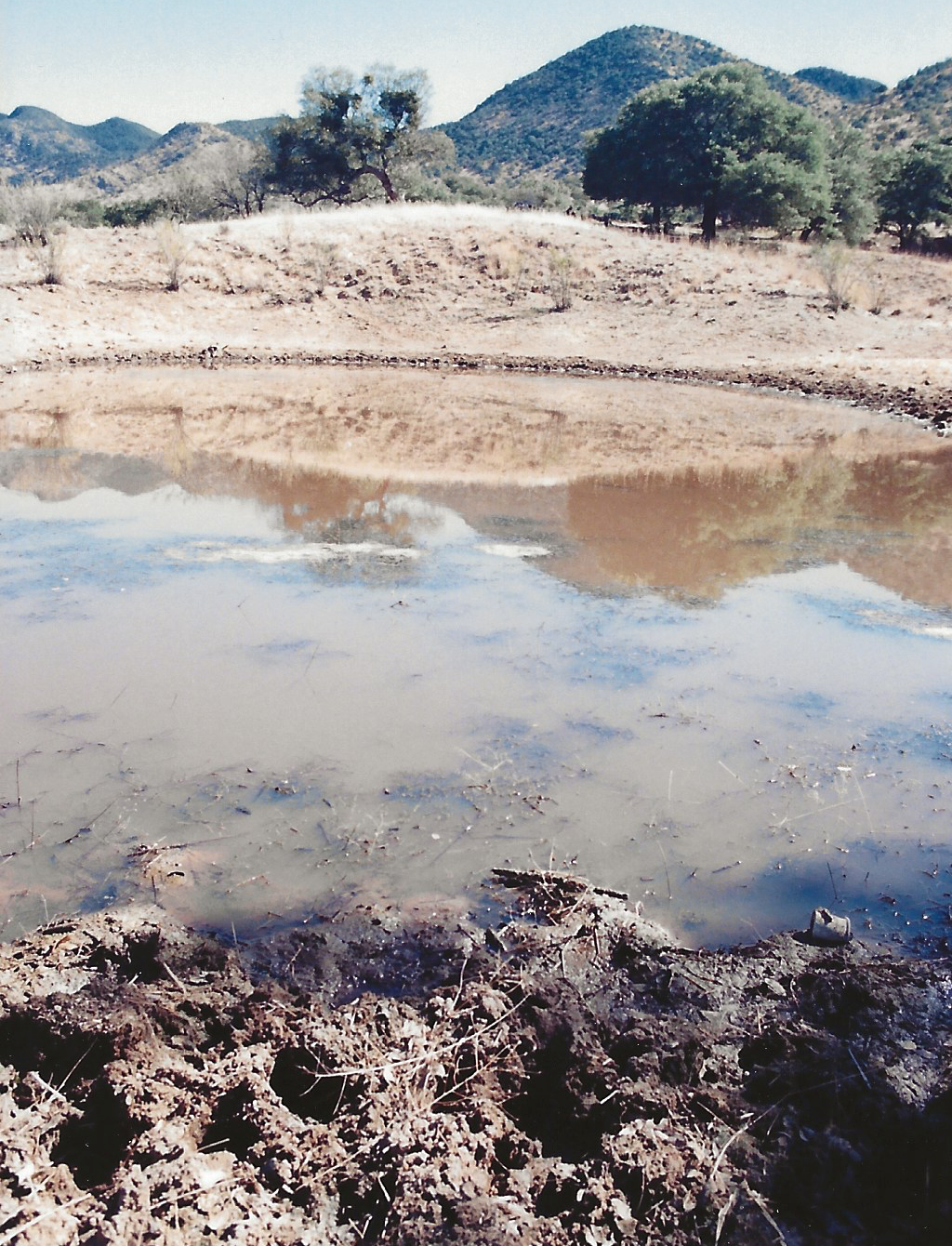The most popular argument ranchers like use to defend their use of Western public lands is that the livestock watering sites they install and maintain are vital for the survival of local wildlife. I’ve even had ranchers tell me there was hardly any wildlife in Arizona before ranchers arrived and “improved” the land, which is ridiculous (Davis 1973).
“Water is life,” is their favorite talking point, as if more surface water is all that wildlife populations need to thrive. But numerous studies have shown that it’s the amount and quality of suitable habitat that has the most influence upon wildlife populations. Surface water is only one component of habitat, and many of the arid West’s wildlife species are adapted to its scarcity. Arizona Game & Fish Department (AGFD) research, for example, showed that Gambel’s quail (Callipepla gambelli) don’t need surface water, and the quantity and quality of the forage they used was the most important limiting factor on quail populations (Gallizioli 1961).
And another study conducted in Arizona’s Sonoran Desert (Krausman 1995) looked at desert mule deer and bighorn sheep populations in the area of the Central Arizona Project canal before and after its construction. They found that, “additional water was not important to the deer or sheep populations.” And a more recent study of mule deer distribution in arid environments (Marshall 2006) found that, “Water in the absence of forage and cover likely will not create mule deer habitat, but forage and cover in the absence of water may provide deer habitat.”
In fact, installing livestock waters in desert areas might be the most destructive place to put them. That’s because they allow more cattle to stay on the land longer during the hot summers and frequent droughts. After the cattle practically denude the desert of its limited number of herbaceous plants, which they prefer to eat, they must resort to eating brush, mesquite seed pods, and low-hanging tree branches to try and avoid starvation (Smith 1993). In fact, research (Rosiere 1975) has shown that cattle grazing the Southwest’s deserts don’t get more than 50% of their forage from perennial desert grasses. This means that desert mule deer, which prefer woody plants, must compete with cattle for browse, especially during hot times. Furthermore, the local herbaceous vegetation can eventually be extirpated because most of it gets eaten before it can produce seeds. (That’s why you rarely see spring wildflowers in desert areas that are regularly grazed.)
Even long-time proponents of livestock waters question their effectiveness in desert areas (Brown 1997; Krausman 1997). For instance, a review of the Arizona Game & Fish Department (AGFD) desert bighorn sheep water development program (Broyles 1995) conducted in the Cabeza Prieta National Wildlife Refuge concluded, “It has not been shown that these developments are necessary, beneficial, or without harmful side effects.”
Many wildlife species will travel further than cattle to reach water (Krausman 1996), and they know where the local seeps, springs, and perennial stream stretches are located. A study conducted in southern New Mexico (Burkett 1994) compared wildlife populations at 20 sites that had man-made waters with the same number of similar sites lacking permanent surface water. They found that, “definitive effects of artificial water sources on native wildlife species were not detectable.” Some new livestock waters can force wildlife to have to travel even more. Elk and deer, for example, prefer to move out of areas when cattle are present (Wallace 1987).
The usual intent of constructing new livestock waters in upland areas is to help improve livestock distribution. The idea is to spread the cattle out more evenly and give them access to more forage. It can help frequently used areas recover from overgrazing, but it can also create competition with wildlife for limited forage in areas that were little used by livestock (McAuliffe 1997). This is especially true if the new waters also allow for increased cattle numbers, which is often the case. It’s typically claimed that proposed range water projects won’t result in any increases in permitted livestock numbers on public lands. But actual livestock numbers are often significantly below permitted numbers, so in those situations real cattle numbers can be easily increased.
The creation of new livestock waters in upland areas is sometimes justified by claiming they will lure cattle away from ecologically important riparian bottomlands. But cattle are bred to be lazy critters, and are unlikely to climb a hill in the summer heat to get a drink when the they can stay in the shade of a tree along a stream. Research (Carter 2017) has shown that, unless the riparian areas are fenced to exclude cattle, the new waters don’t significantly improve the condition of the riparian areas, but primarily facilitate rotational grazing and more livestock on the surrounding uplands.

Furthermore, new livestock waters in the uplands are often created by sinking a pipe into a natural spring and sending the water to a watering trough located away from the spring. The construction of these types of waters are often subsidized by state game management agencies because big game species can use the troughs too. If the spring source is fenced off, it can stop cattle from tearing it up, but these diversions can significantly reduce, or practically eliminate, the amount of water available to the riparian habitat and its dependent wildlife, such as frogs and salamanders, that might live at the spring. This ecological damage is amplified when springs produce less water during droughts.
Statewide, the AGFD maintains more than 3,000 man-made watering sites in remote locations around Arizona. The agency and its private partners deliver up to 1.5 million gallons of water to these catchments every year, at an average annual cost of about $1 million. Many of these waters are truly dedicated to wildlife, as cattle are fenced out of them. But some are being built to primarily water cattle, offsetting the benefit they may provide to local wildlife.
And even if a new livestock water can provide some net benefit to the local wildlife, those benefits disappear if the rancher doesn’t maintain the water when cattle aren’t using the pasture.

Still, the idea that more water means more wildlife sounds intuitively good. It’s an easy concept for hunters and hikers to believe because they know one of the best places to spot wildlife is around water holes. But just because animals congregate around water holes doesn’t mean they’re relying on that water source for their survival. For example, how often have you stopped to take a drink from a water fountain just because it was convenient?
But what about all of those biologists warning us the majority of the West’s wildlife depend, in some way, upon riparian areas for their survival? Livestock waters rarely support significant amounts of riparian habitat. In fact, many of them are so trampled by cattle they are considered ecological sacrifice zones.

Unfortunately, many federal land managers also believe in the myth of the universal benefits of livestock waters. Several years ago, for example, I accompanied U.S. Forest Service staff on a horseback inspection of a livestock grazing allotment in the arid Superstition Mountains of the Tonto National Forest in central Arizona. As we neared a muddy stock tank perched on a chaparral-covered hill we scared off several mule deer that were taking a drink. The District Ranger turned toward me in his saddle and told me how glad he was that livestock were allowed to graze public lands, because deer would be scarce if there weren’t any livestock waters.
The bottom line is the ecological effects of building livestock waters on public lands should be objectively assessed for net benefits to the local wildlife. Sufficient vegetation to provide quality cover and forage appears to be more important than surface water for most arid land species – and livestock grazing negatively affects both of those habitat components.
Moreover, new livestock waters are expensive to build and they are typically built with the help of public funds. In most situations, it would be cheaper for the taxpayers if federal land managers simply set permitted livestock numbers according to the reliable surface water that is already available.